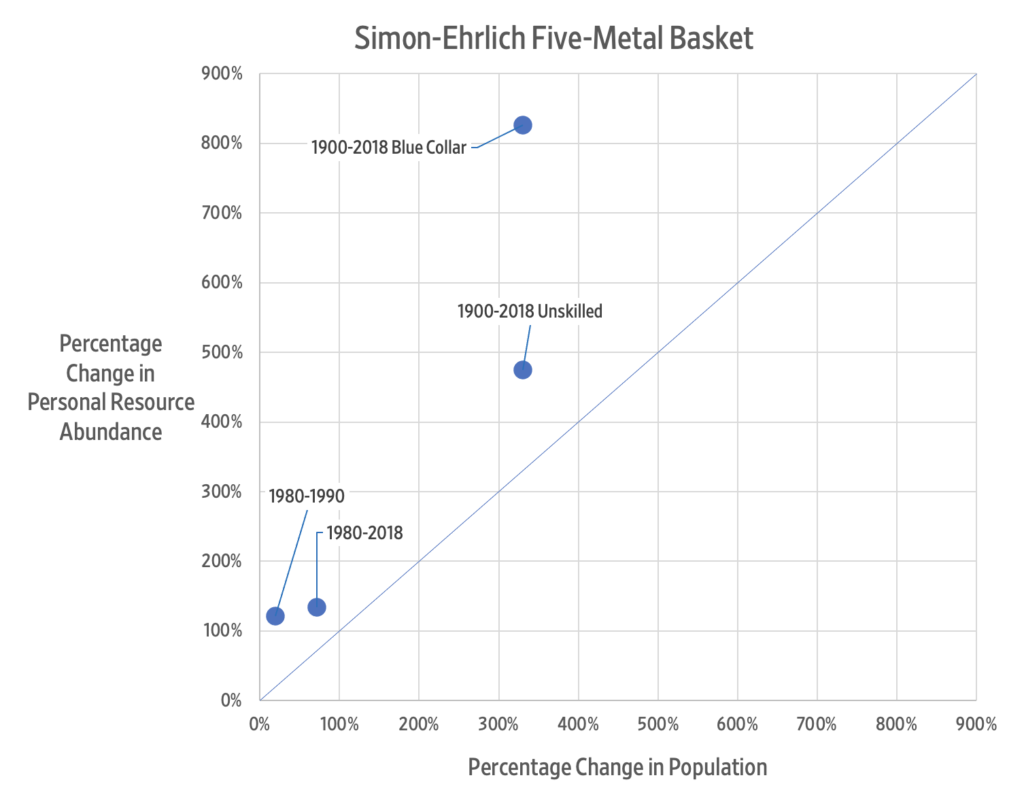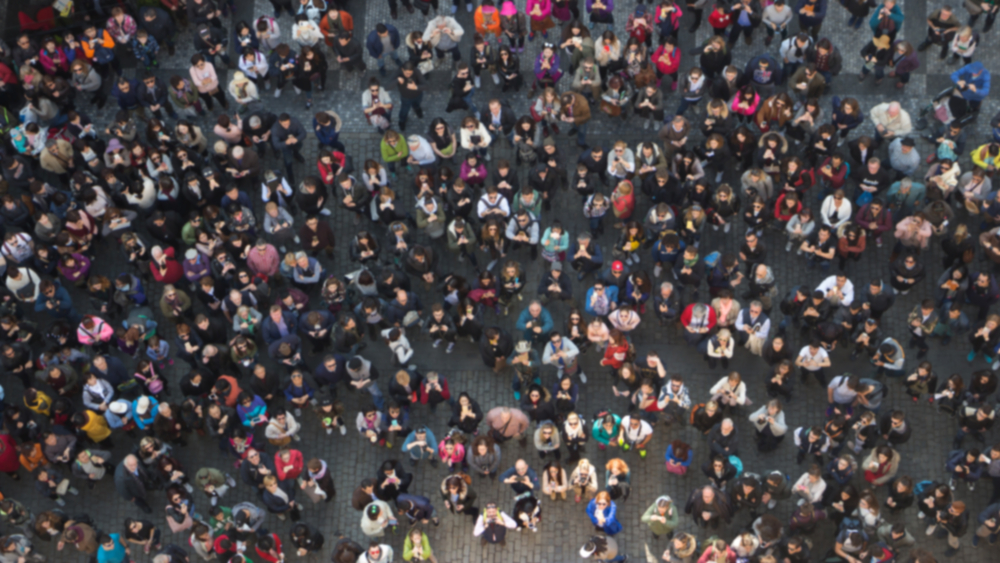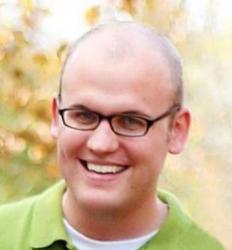In 1968, biologist Paul Ehrlich published “The Population Bomb,” a best-selling panic manifesto that predicted mass starvation and global catastrophe due to overpopulation. “The battle to feed all of humanity is over,” Ehrlich proclaimed. “In the 1970s hundreds of millions of people will starve to death” and “nothing can prevent a substantial increase in the world death rate.”
Such prophecies never came to pass, of course. Even still, Ehrlich remained steadfast in his pessimistic perspective, constantly updating his predications about human deprivation while gaining notoriety from the media and influence among the masses.
By 1980, economist Julian Simon had heard enough, and proceeded to propose a wager to test his own competing theory. Contrary to Ehrlich, Simon saw humans as “the ultimate resource,” believing that more humans would mean more abundance, not less.
Ehrlich agreed to Simon’s wager, and was joined by ecologist John Harte and scientist John P. Holdren. NPR summarizes the infamous bet as follows:
Simon proposed that they bet on what would happen to the price of five metals — copper, chromium, nickel, tin and tungsten — over a decade. And the logic was that these metals were essential for all kinds of stuff — electronics, cars, buildings.
So, if Ehrlich was right, more people on the planet would mean we would start running out of stuff, and the price of these things should go up. But, if Simon was right, the markets and human ingenuity would sort things out, and the prices would stay the same or even go down.
Simon won, and his victory was decisive. The population continued to grow, but instead of crumbling under the weight of our own appetites, humans triumphed over scarcity. We learned how to do more with less, driving unprecedented declines in global poverty and hunger.
By 1990, Ehrlich quietly admitted defeat in the form of a check for $576.07, written to Simon.
Simon’s thesis is still being proven correct, and is formally assessed as part of the The Simon Project, whose Simon Abundance Index “measures the relationship between population growth and the abundance of 50 basic commodities, including food, energy, materials, minerals, and metals.”
According to the latest report, authored by economist Gale Pooley and policy analyst Marian Tupy, “the Earth was 608 percent more abundant in 2020 than it was in 1980.”
To reach these findings, the researchers looked at “personal resource abundance,” which assesses resource availability from the standpoint of the individual. “How much more abundant have resources become for an average inhabitant of the planet or a typical U.S. worker between two points in time?” they ask.
They then assessed “population resource abundance,” which expands the analysis to global population trends. If the former looks at “the size of a slice of pizza per person,” this view assesses “the size of the entire pizza pie.” Their conclusion?
Between 1980 and 2018, the world’s population rose by 71.2 percent. Yet [population resource abundance] PRA rose from one pie to 4.01, or 301 percent. The [annual growth in PRA] amounted to 3.72 percent, indicating a doubling of PRA every 18.97 years. Furthermore, we found that every one percent increase in population corresponded to a 4.23 percent increase in the PRA of the five metals.
In other words, population growth continues to correspond with greater overall abundance, decades after Simon’s original wager. Indeed, stretching the analysis to begin in 1900 makes the trend even more pronounced.

“We found that humanity is experiencing what we term Superabundance – a condition where abundance is increasing at a faster rate than the population is growing,” the authors conclude. “Data suggests that additional human beings tend to benefit, rather than impoverish, the rest of humanity.”
To some, it may seem as though Simon just got lucky. But the deeper one goes into the data, and the longer the trend continues, the more apparent it becomes that Simon simply had deeper insight into the promise and potential of the human person, particularly when situated within a civilizational context of economic freedom and “associational life.”
Why did Ehrlich lose?
Ehrlich and his group lost because they thought like biologists. In 1971, for example, Ehrlich and Holdren wrote that as “a population of organisms grows in a finite environment, sooner or later it will encounter a resource limit. This phenomenon, described by ecologists as reaching the ‘carrying capacity’ of the environment, applies to bacteria on a culture dish, to fruit flies in a jar of agar, and to buffalo on a prairie. It must also apply to man on this finite planet.”
Why did Simon win?
Simon won because he thought like an economist. He understood the powers of incentives and the price mechanism to overcome resource shortages. Instead of the quantity of resources, he looked at the prices of resources. He saw resource scarcity as a temporary challenge that can be solved through greater efficiency, increased supply, development of substitutes, and so on.
The relationship between prices and innovation, Simon insisted, is dynamic. Relative scarcity leads to higher prices, higher prices create incentives for innovations, and innovations lead to abundance. Scarcity gets converted to abundance through the price system. The price system functions as long as the economy is based on property rights, the rule of law, and freedom of exchange. In relatively free economies, therefore, resources do not get depleted in the way that Ehrlich feared they would. In fact, resources tend to become more abundant.
At its core, it’s a lesson in the importance of our attitudes and imaginations about the human person – our “anthropology,” as we call it at Acton.
“The ultimate resource is people,” wrote Simon in “The State of Humanity.” “… skilled, spirited, and hopeful people who will exert their wills and imaginations for their own benefit, and so, inevitably, for the benefit of us all.”
Yes, Simon “thought like an economist,” but more importantly, he had an intuitive grasp of the dignity and creative capacity bound up in human persons made in the image of God.
Humans are not just consumers, but producers, a lifeblood to the earth, destined for abundance. We are makers of love, wealth, culture, and otherwise, crafted by a creator-God to be gift-givers – sharing, exchanging, collaborating, and innovating alongside the grand family of humankind.

